Aug 27, 2010
A Quadrillion, To Scale
By David Dick-Agnew
 f you’re like me — like most people — you probably have a hard time holding the concept of a quadrillion in your mind. Even a million is a little hard to wrap your head around. This means that when someone throws out the fact that Warren Buffett is sitting on $62 billion, or that the US debt is over $13 trillion, it’s more or less meaningless. How can we grasp the importance of these ideas if we can’t even comprehend their scale?
f you’re like me — like most people — you probably have a hard time holding the concept of a quadrillion in your mind. Even a million is a little hard to wrap your head around. This means that when someone throws out the fact that Warren Buffett is sitting on $62 billion, or that the US debt is over $13 trillion, it’s more or less meaningless. How can we grasp the importance of these ideas if we can’t even comprehend their scale?
To help to better visualize the relative weight of these amounts, I’ve thrown together this handy illustrated guide. The scale is more or less consistent, so walking through the next 6 images will hopefully show how these orders of magnitude stack up.
First off, 1:
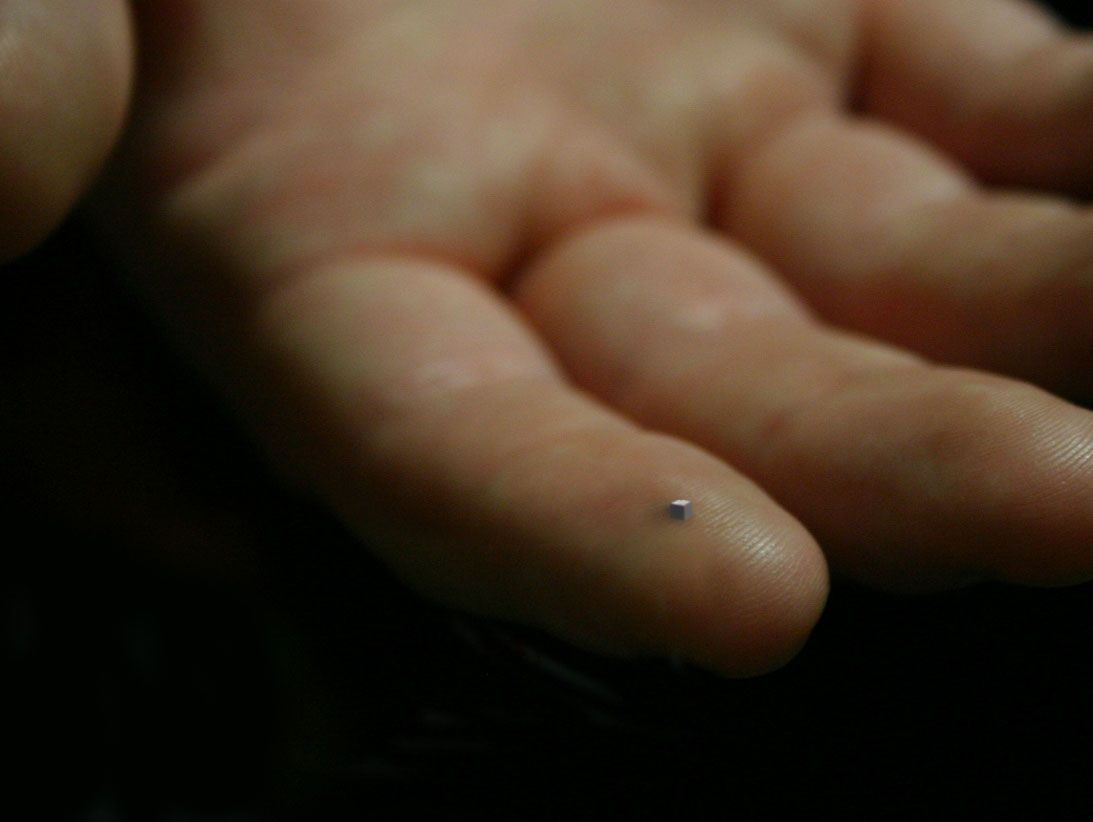
For the purposes of this guide, 1 = 1 cubic millimeter. That’s less than 1/16″, for all you imperialists out there. Roughly the size of a grain of coarse sand, or a honeybee’s brain. Keep that in mind — that’s our basic unit of measurement.
To stack these little guys ten high, ten wide, and ten deep, it would take 1 thousand (1,000) of them (10 x 10 x 10, or 10³ if that helps). 1000 of these units would fit into a space the size of a sugar cube:
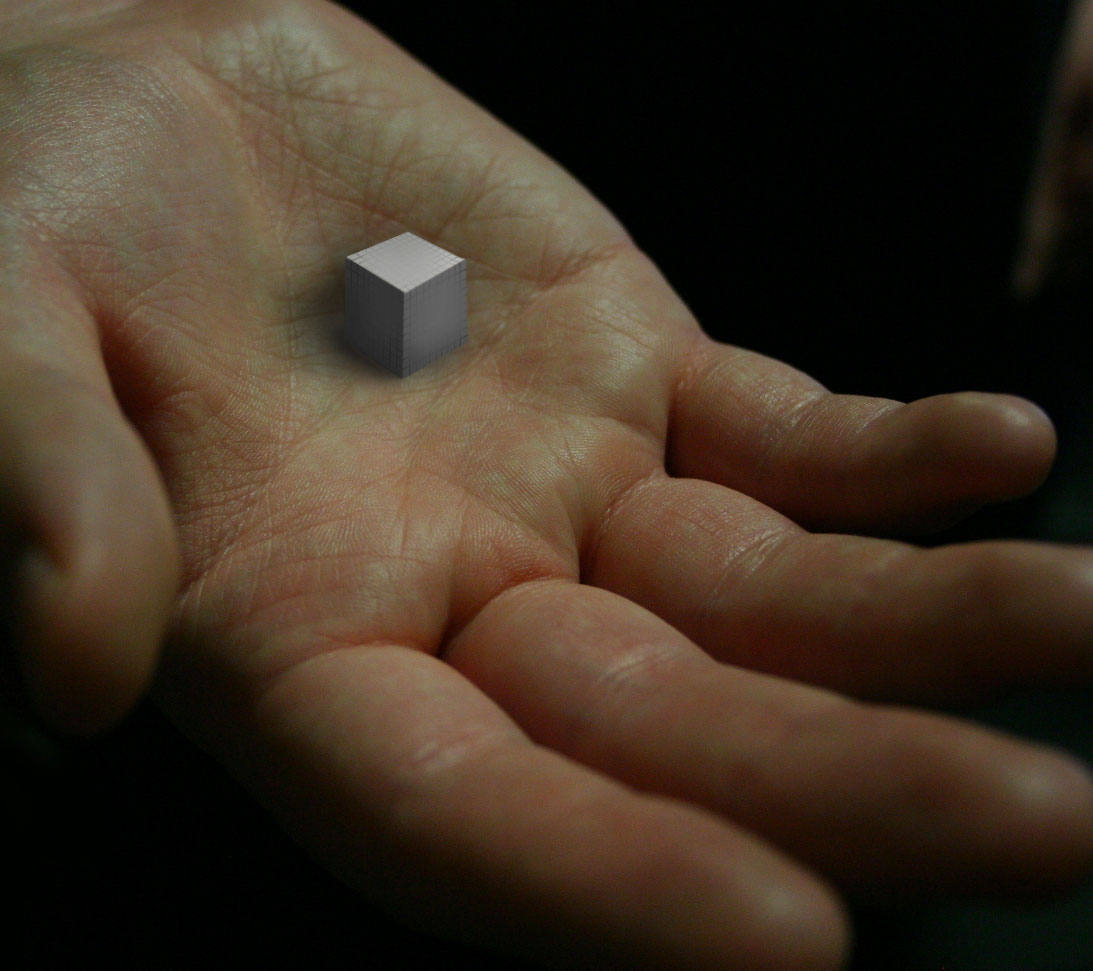
Most people measure their income in the scale of these sugar cubes. The average American, working full-time, pulls in about 40 of these a year. Not enough to make a single handful. Or, to look at it another way, this represents roughly the number of words it would take to replace this picture.
If you stack these sugar cubes 10 high, 10 wide, and 10 deep (which would take 1000 of them, or 100 x 100 x 100 of our original tiny single unit), you will have 1 million (1,000,000) of of the original unit of 1:
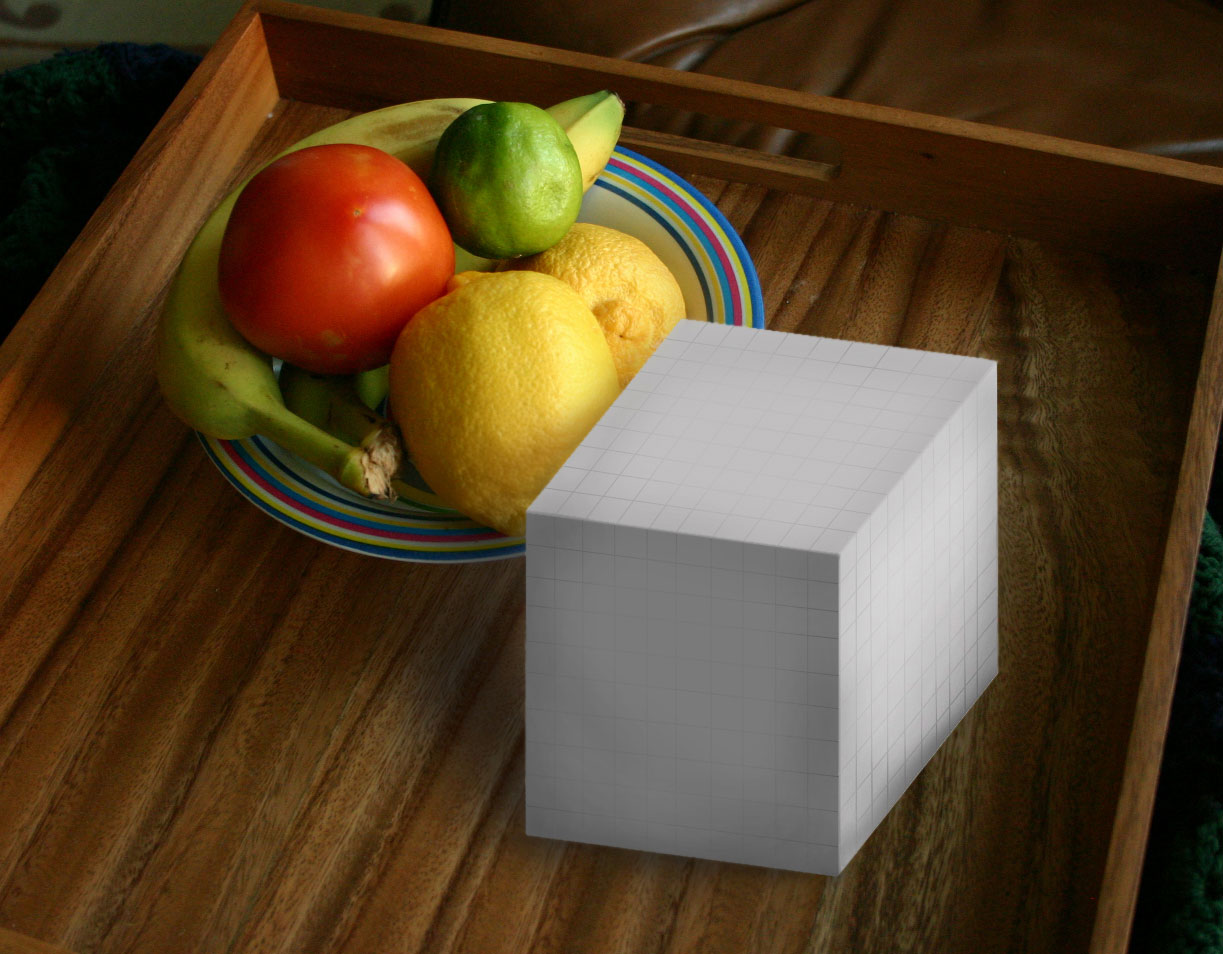
That’s roughly one for every person living in San Jose, America’s 10th most populous city. Still fits nicely on an average breakfast tray. But bearing in mind that it’s made up of bits the size of grains of sand — that’s still a lot of them.
Incidentally, this is also 1 liter in volume. Fill it with water and it will weigh 1 kilogram. Ah, the metric system!
To stack these 1-liter-sized cubes 10 by 10 by 10 would take 1 billion (1,000,000,000) of our basic 1mm³ units:
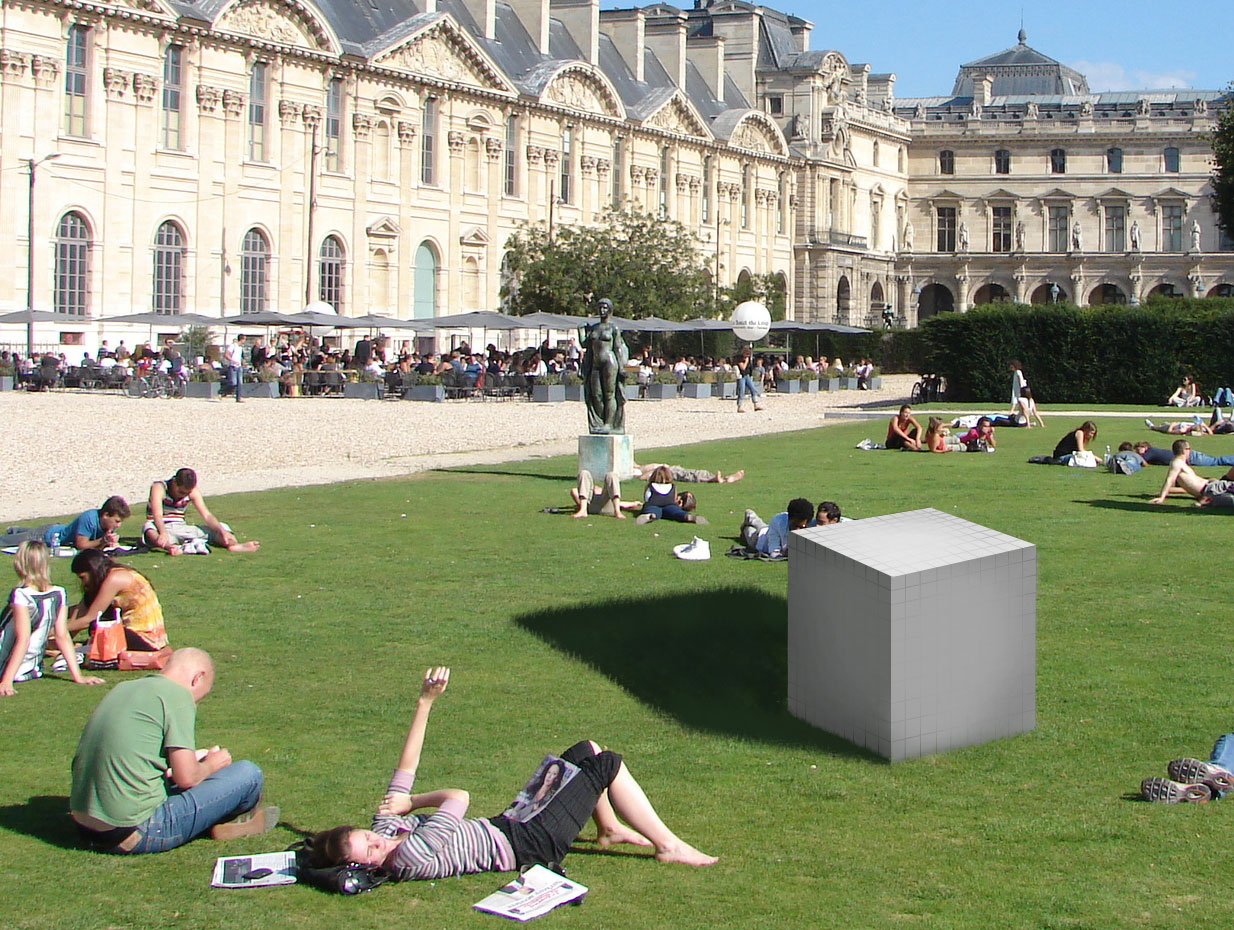
1 billion is how much it costs, in dollars, to buy approximately one third of a Virginia-class nuclear submarine. It’s how much money Avatar made (international box office gross) in only 17 days. Warren Buffett gave 37 of these to the Bill & Melinda Gates Foundation in 2006. But it would take the average American, working full-time, 25,000 years to earn just one of them (and it takes 1 year for Djibouti’s entire population of 864,000 people to do the same). It’s expected that next year, the world population will reach 7 billion; imagine 7 of these in a row, and there’ll be one grain of sand for every person alive. And it would take at least 20 of them to represent all the websites on the Internet.
If you could manage to find enough of these 1m³ cubes to stack them 10 high, 10 wide, and 10 deep, you’d be looking at 1 trillion (1,000,000,000,000) of our starting units:
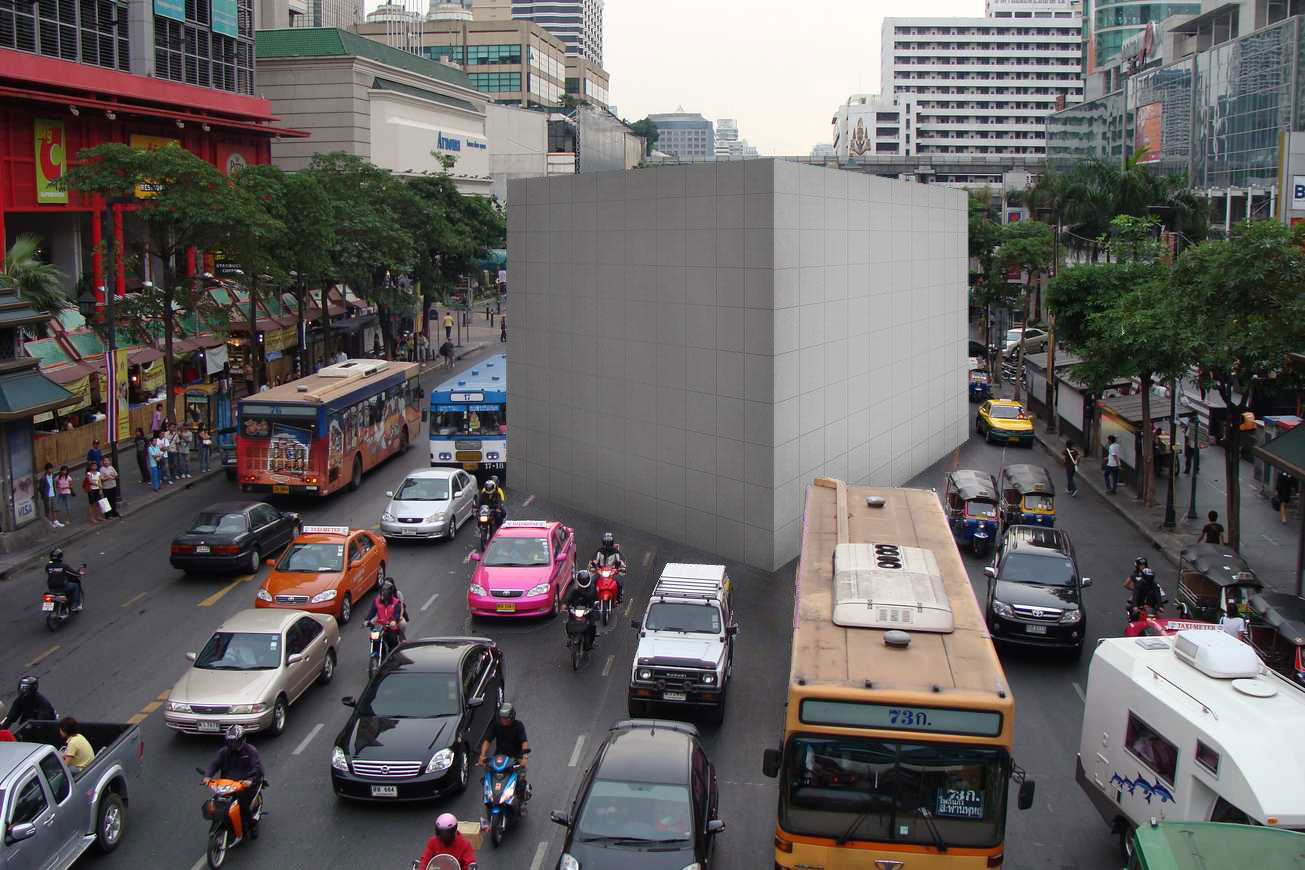
Enough to cause some pretty bad traffic. This is getting up into the range of pure abstraction, and yet there are a few things we measure in the trillions. It would take 5 of these mammoth blocks to represent Japan’s GDP in a year. Australia’s would take just 1. America’s GDP would require 14, its debt would take 13, and its bank bailout 10. One of these could purchase all homes foreclosed in America in 2007 and 2008 combined.
It would take between 60 and 100 of these trillion-cubic-millimeter blocks to represent all the synapses in the human brain.
And it would take a whopping 200 of these massive blocks to represent every ant on Earth. And given that each ant is, on average, a little bigger than a large grain of sand, that means if you put all the ants on earth in a single place, these buildings — and these poor people — would be buried.
But it would take even more than 200 of these blocks — 5 times as many, to be exact — to reach 1 quadrillion (1,000,000,000,000,000):
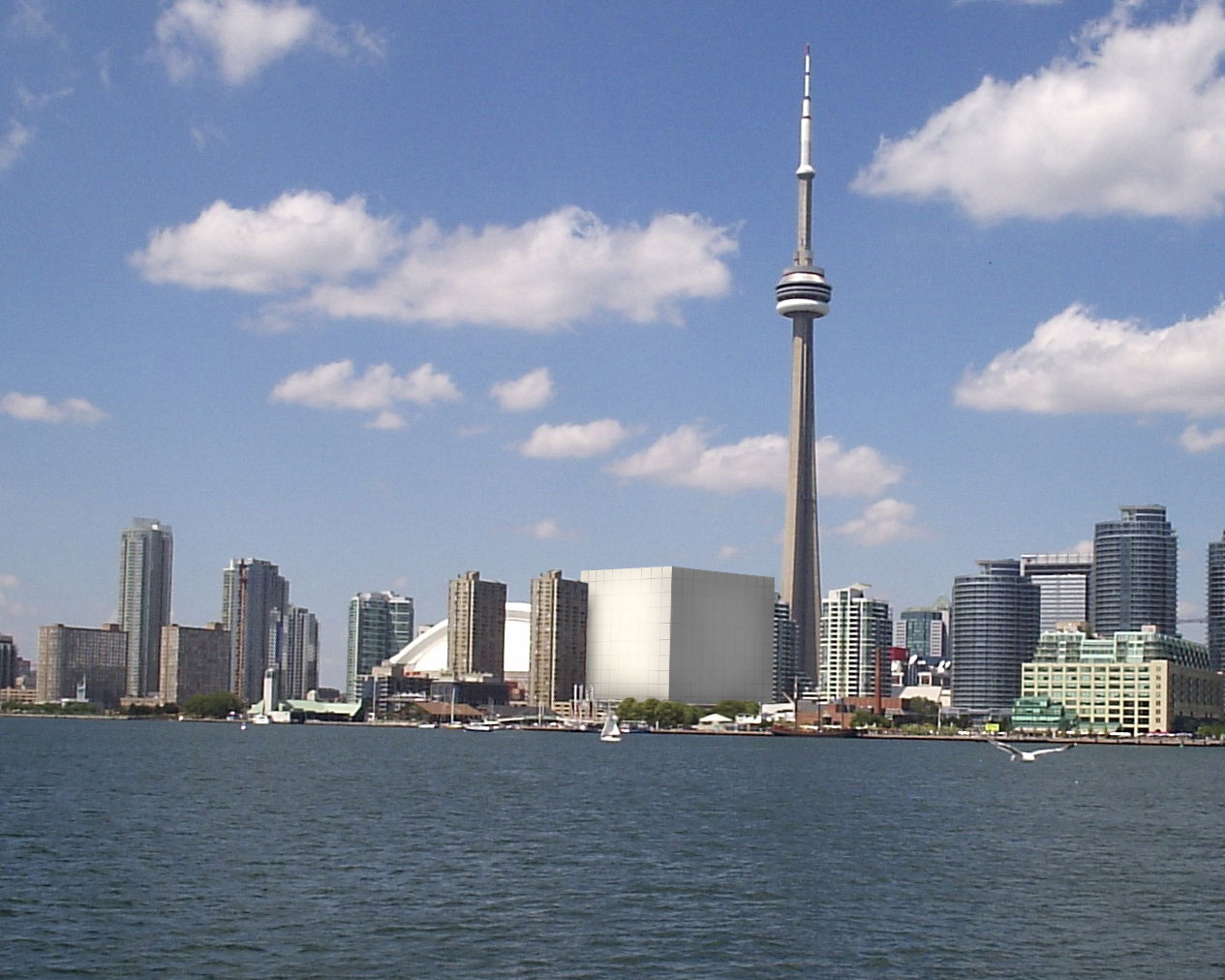
This is a number so huge, it has basically no practical applications (unless you wanted to talk about the number of ants that lived in the past 2 and a half years). It would take between 2,500 and 10,000 galaxies like our own to total a quadrillion stars — maybe as much as a tenth of the surveyed universe.
The average American, working full-time, would have to work 250 million years to earn 1 quadrillion pennies. If you’d started when the continents still formed the single land-mass known as Pangaea, you’d just about be there by now. Of course, a quadrillion pennies would weigh 2,500,000 metric tonnes, equal in weight to Russia’s entire grain imports in 2010 — that would require a pretty big piggy bank.
Back to the human brain: it’s estimated that our synapses each fire about 300 to 400 times per second, but at peak moments they can fire as many as 1000 times a second. It’s impossible for every synapse to fire at the same time, but we can still calculate the upper limit of possible brain events per second. Given the estimate of 60 to 100 trillion synapses, that means it would take between 18 and 100 of these mammoth, skyscraper-sized blocks to represent the range in the number of events the human brain is capable of sustaining in a single second. That’s a whole city! And in 10 seconds? That’s right: it would take up to 1,000 of them — 1 quintillion (1,000,000,000,000,000,000) mm³ in total. Now if that doesn’t beat all.
By all means, keep going. If you have any other things measurable in billions, trillions, or quadrillions, I’d love to hear about them! That’s what the comments are for. ![]()

I heard that if you had a stack of a million $1 bills it would weigh 22 pounds. Now, conceptualize a billion dollars. A billion one dollar bills would weigh 22,000 pounds… roughly three fully grown African elephants. Just jumping from a million to a billion. That really puts things in perspective for me.
Did you hear that?
I think my brain just exploded.
Mark Neustadt says:
August 27, 2010 at 1:34 pm
I heard that if you had a stack of a million $1 bills it would weigh 22 pounds.
Um, I think you mean 2200 pounds. Each bill weighs about a gram, 1 million dollar bills equals 1 million grams or a metric ton. 2200 pounds. A billion dollars in one dollar bills would weigh 3000 elephants.
Here’s another visualization … it’s a little dated, but you get the idea.
http://www.87billion.com
The 2,000 kronor fine (approx. $270 USD) that was levied against the Swedish schoolgirls that bugged their teachers’ staffroom could have been measured in quadrillions of Zimbabwean dollars using the black market trading values prior to the world bank suspending the currency.
So maybe it’s not a practical use, but it does put the hyperinflation into perspective.
Lake Superior contains 4 quadrillion gallons of fresh water, approx. 10% of all the fresh water on Earth. The Amazon River system has twice as much as Lake Superior.
I can buy a hard drive today with two trillion bytes of storage for only $120. That means you can put together a complete system with more than a quadrillion bytes of storage for less than $100,000 and many businesses already have. I do not think it is accurate to say that there are no practical applications of numbers this large.
but what about a zillion? what does a zillion look like, dammit!?
No visualization, but food for thought: Steven Pinker gives one hundred quintillion as the number of distinct possible sentences any human can produce or understand. That’s in one language, of course, since all human languages are underlyingly the same.
The equation is detailed at http://www.edge.org/3rd_culture/serpentine07/Pinker.html and here:
Number of possible sentences = W^L
W = the geometric mean of number of words that can appear in a position in a sentence. Conservatively estimated at 10.
L = length of a sentence. Approximate upper limit of L in speech is 20.
Try visualizing this number.
http://en.wikipedia.org/wiki/Graham%27s_number
How about number of known stars in the universe… 7.7 septillion !
How many are in a brazilian?
That first commenter got confused with a decimal place or two… a dollar bill weighs about one gram, so a thousand dollars weighs a kilogram, and a million dollars weighs one thousand kilograms, or 2200 lbs…
So a million dollars in hundred dollar bills weighs 22lbs, but a million in singles weighs over a ton.
myah
When I heard that the Gulf of Mexico contained 460 quadrillion gallons of water, I relaxed a little bit about the gulf oil spill.
“How many are in a brazilian?”
Well, if you’re talking hairs, I suppose the answer is “zero”.
Think about the number of atoms in a grain of salt. According to http://bit.ly/dp1kRn there are roughly 1.2 x 10^18.
So an object about 1/27 the size of your starting cube has about 1,000 times as many atoms in it as the building-sized quadrillion cube block.
There’s lots of stuff in computer engineering measured in terms of “petabytes” (one quadrillion bytes, i.e., a quadrillion sets of 8 on/off switches each). For example: Google processes 24 petabytes every day, AT&T transfers 19 petabytes every day, World of Warcraft maintains a game server with over 1 petanbytes of data, etc.
http://en.wikipedia.org/wiki/Petabyte
you say a quadrillion is a number so huge, it has basically no practical applications
actually, a quadrillion is the size of the derivatives market:
http://www.globalresearch.ca/index.php?context=va&aid=12753
@Russell. Thanks. My brain has now imploded completely.
More on numbers here (including an explanation of a zillion)
http://www.guardian.co.uk/world/2009/mar/25/trillion-dollar-rescue-plan
I’m sorry, but my skills at math barely help me maneuver around the dollar store.
Now could somebody tell me what the speed of light is when expressed in “furlongs per fortnight”?
the speed of light = 1.8026175 × 10^12 furlongs per fortnight
If I look at my computer screen, with 1920×1200 pixels, or 55,296,000 bits, as a single register which can be incremented from 0 through 2^55,296,000 -1 = the total number of unique pictures which can be displayed upon it. It would display all of you in myriad points of your life at some point in this impossibly long time frame, as well as everyone on every other planet in the universe.
The Mega Penny Project goes even further
http://www.kokogiak.com/megapenny/
one mole of something is about 602,214,179,000,000,000,000,000 of those somethings, or about 6 sextillion of them. if you have one mole of atoms of an element, it’s atomic number in grams is how much it weighs. kind of puts into perspective both the size of atoms and the magnitude of this number.
Good day from Australia.How many tiny sugar cubes of that size just described would it require to fill up the entire Universe?And how long would it take to count all these sugar cubes that filled up the cosmos?
Your’s sincerely,Adam Gal 11:05 am,22/05/2012.
Be careful with every static fix I’ve read here. When we are overwhelmed by extremely large or small numbers; we all are, as proven by Professor Daniel Kahneman, we have limitations imposed on us. I should add that Professor Kahneman is a psychologist who received a Nobel Prize in Economics, and I do so because the limitation can be shed. Your “snapshots” don’t hold in the dynamic and ever-changing realm we reside in; it should be seen as a movie. It’s calculus, rate of change, the momentum shift in a ballgame, and the famous tipping point described by Gladwell.
At a more human level, it explains how one plus one can be greater than two as seen and demonstrated in successful relationships, romantic and otherwise. If I have an apple and you have an apple nothing is gained from the exchange but if I have an idea and you have an idea…
1 quadrillion is 1,000,000,000,000,000 (10^15)
[…] Internet is replete with analogies that attempt to put that figure in perspective. According to Ignis Fatuus, for instance, it would take between 2,500 and 10,000 galaxies like the Milky Way to fit 1 […]
I need to see a quintillion cubic milliliter block placed on a country on the earth…
Actually, dropping a sugar cube 1,000,000,000,000,000,000,000,000 cubic millimeters big (1 quitillion X 1 thousand) on top of the UK might not be a good idea. The width of the cube would be 1000 kilometers, 100-200 kilometers longer than from the top of scotland to the bottom of wales… sight would not be pretty… 1 billion X 1 Quintillion is enough to destroy a continent… 1 billion X 1 quintillion million cubic millileters (look back at the first picture) is the size of the earth. Considering that it takes 1.3 million earths to match the size of the sun, if an evil genius decided to throw a sugar cube of which the number of millimeters was equivalent to the estimated number of variations in a game of Igo (WeiQi, Baduk) (10^27, or 1, 000, 000, 000, 000, 000, 000, 000, 000, 000 or 1 quintillion X 1 quadrillion) at the sun, all life as we know it would end. A sugar cube the size of 1 million earths will easily ruin our star.